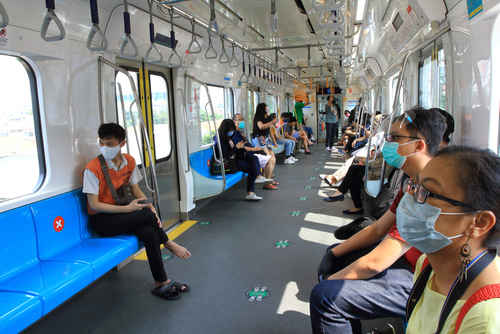After two years of battling the COVID-19 pandemic, many countries in Asia have recently seen a surge in infections that, despite being mild, is still a cause for concern.
However, most countries are treating COVID-19 as endemic, with the new wave having limited pressure on healthcare systems. Infection rates have risen in Singapore, India, Indonesia, and Vietnam, among others. But the good news is that the highly transmissible omicron variant of the virus that is causing the surge in cases, is not resulting in widespread severe illness.
Singapore’s Weekly COVID Cases Nearly Doubled
Data from Singapore’s Ministry of Health showed that the weekly cases of COVID-19 in Singapore nearly doubled from 14,467 to 28,000 in the final week of March. Singapore, which significantly reduced its threat from COVID-19 in February, dropped most mask mandates. However, the current wave has resulted in Singapore reconsidering its public health measures.
India Reported its Highest Single-day Tally since August
India, which saw a fatal wave in 2021 that resulted in hospitals running out of oxygen and beds, reported more than 10,150 new infections on Thursday, the highest single-day tally since late August. While hospitals and clinics haven’t seen a rise in admissions, some states have imposed new mask mandates, and the country has been conducting mock drills to check for preparedness.
Indonesia’s Daily Infections Have Reached a Four-month High
Indonesia’s daily caseload has been increasing since the government eased mobility curbs, with infections reaching 987 on Wednesday. President Joko Widodo urged citizens to take a second booster shot to curb the spread of the virus. Nevertheless, he was optimistic, stating that the country’s high level of immunity meant that the situation was still under control.
Vietnam is Ramping Up Virus Prevention Measures
Vietnam’s health ministry has ordered new preventative measures at schools and close monitoring at border gates to detect cases and prevent community spread after reporting 639 new cases in the past seven days. Cases in the Philippines, however, have plateaued since February, and there was just a single COVID-19 death in March.
Living with COVID-19
Most countries in Asia are attributing the new wave of COVID-19 infections to the highly transmissible omicron strain. They have also advised that new coronavirus waves are to be expected from time to time, and people should continue to take precautions. Many countries have vaccinated most of their population or had prior infections, and governments are dismantling many curbs to adapt to living with COVID-19.
Conclusion
In conclusion, despite the mild wave of COVID-19 infections in Asia, it is imperative to remain vigilant. The new wave serves as a reminder to all countries to continue taking the necessary steps to keep the virus under control. As countries in Asia treat the virus as endemic and dismantle many curbs, they must ensure that adequate measures are in place to keep the virus from spreading. This includes increasing vaccination rates, encouraging the public to take precautions such as wearing masks, and preparing healthcare systems to respond to a surge in cases if necessary. The global fight against COVID-19 is far from over, and we must continue to work together to keep it under control.











